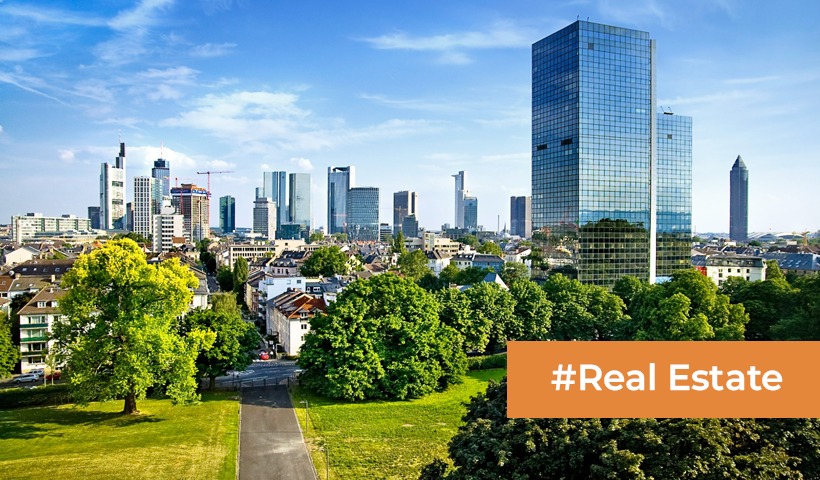Farmhouse Boom in Delhi: What It Is and What It Isn’t
The farmhouse fever is not a new phenomenon in New Delhi. Whereas the wealthy have traditionally favoured having opulent bungalows and farmhouses in the heart of the National Capital, various regulatory barriers have been removed to make such increasingly available to a broader range of customers.
As a result, that’s not unexpected that desire for farmhouses has increased during the pandemic.
In the post-pandemic period, spacious and luxurious farmhouses in or near New Delhi are once again in high demand. Prominent corporate leaders and businesspeople are now on the lookout for larger and more spacious places, reportedly fed up with being cooped up in high-rise flats, penthouses, and luxury floors during the state-wide lockdown. According to industry specialists, numerous transactions for such properties have been noticed in mid-2021 over a substantially shorter period of time. Inside the pre-COVID-19 period, there were just 2-3 bargains every month, however now there are around 20-25 deals per month. HNWIs (high-net-worth individuals) are scouring New Delhi and the surrounding NCR zones for luxurious farmhouses to escape the pandemic’s stress.Rather than high-density and vertical lifestyles, they prefer horizontal living.
The demand for luxury farmhouses in the National Capital has increased significantly. According to specialists, a trend has emerged in which joint families are selling their primary residences or clusters of apartments in order to move to a larger farmhouse with a garden or lawn and at minimum little open area. By instance, one of largest such transactions occurred in New Delhi a few years ago, whenever the owners of prominent sanitary-ware business Jaquar paid a stunning Rs. 235 crores for three huge farmhouses in Westend Greens. Experts estimate that each of these farmhouses is spread out across a lovely 2.5 acres.
Additional Important Factors to Consider
Farmhouses are also expected to become major and exclusive homes for well-heeled buyers, according to analysts. Green grass, plants, seclusion, safety, and health and strength and conditioning services are all important to them. According to specialists, such farmhouse properties include tennis courts, sports facilities, personal sports facilities, play areas, office spaces, yoga classes, snooker tables, golf putting greens, training nets, and in certain instances, home theatre systems. Those farmhouses are typically 1 to 2.5 acres in size, with 4,000 square feet or more. The prices normally start at Rs. 20 crore and can go up to Rs. 100 crores.
Vasant Kunj, Westend Greens, Sultanpur, Radhey Mohan Drive, and Chattarpur, the National Capital’s famous bungalow neighbourhood, are all sought-after localities. According to sources, prices have jumped by 10-30% due to increased demand following the COVID-19 outbreak. The Green Development Region or GDA policy draft has also been approved by the DDA (Delhi Development Authority) in order to ensure an integrated development framework of land within the defined green belt and the LDRA (low density residential area) based on the 2021 Delhi Master Plan.
Grades 2, 1, and 3 are the three approaches that are used. The project will give 600-4,000 square meters equivalent to even more then 1 acre in the first grade. At Grade 2, an area of 4,000-10,000 square meters, encompassing 2.5 acres, has been suggested. Sizes of 10,000 square meters and larger have been suggested in the third grade. Compact farm buildings will obtain a larger floor area ratio (FAR) or sanctioned area once they have been cleared by the government. According to analysts, this implies that people would have more room on a smaller plot, resulting in an exponential increase in farmhouse demand in New Delhi in the future. The proposed rules have their origins in laws enacted many years ago, however the actual system has taken a very long time.
These revised DDA standards will breathe fresh life into the farmhouse market in a city in which the illusive Lutyens Bungalow Zone (LBZ) remains totally off-limits and expensive for everyone but a few selected billionaires and multi-millionaires. People with wealth in New Delhi are returning to horizontal growth once again, including huge farmhouses, greater greenery, open areas, and quality facilities which enhance overall standard of living. Some rich families are also abandoning their single-family homes and bungalows in desirable but crowded areas of the city and relocating to farmhouses, as previously indicated. Some people are selling their luxury apartments, such as duplexes and penthouses, in order to make the changeover.
Chattarpur had become a wealthy and famous farmhouse enclave throughout the years. It drew a substantial section of the Capital’s population and was renowned for some of the country’s finest opulent real estate. Many additional regions near to Delhi have quickly developed into important hubs for gated farmhouse communities with ultra-exclusive facilities. The COVID-19 pandemic has altered several variables in the property market in the Capital. According to analysts, there appear to be some fascinating changes coming!
Disclaimer: The views expressed above are for informational purposes only based on industry reports and related news stories. PropertyPistol does not guarantee the accuracy, completeness, or reliability of the information and shall not be held responsible for any action taken based on the published information.




